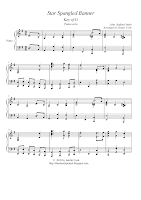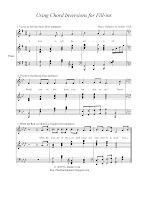The church pianist can play an important rolein encouraging the vocalist/s that providespecial music for the church service.This is especially true for the beginner vocalist
or a young child that needs the extra guidance.
The following, is a list of things I do to put the
vocalist at ease.
These tips are merely suggestions for anyone
needing some ideas.
*Have the vocalist leave his music on top shelf
underneath the pulpit (book opened) before the
service begins. This procedure ensures the music
is ready and in place. (As long as the pastor knows
you're doing this, so he won't move it) :)
During (shake hands) time or some other transistional
time before the message....the vocalist or vocal group sits
on the front row to allow for a shorter entrance to the
stage. (timesaver)
*The pianist begins playing the introduction as the
vocalist walks to the pulpit to avoid an awkward
moment of silence for the vocalist. The early piano
introduction also produces a smoother transistion
into the special music time....keeps things moving!
(I always play softly as vocalist/s enters the stage
and increase my volume toward end of intro so that
the vocalist knows I'm nearing the end of the intro-
duction.
*Special notes: (For ensembles)If I'm playing for an ensemble...say....six or more people...
I play softly at the end while they exit the stage; covering
an awkward moment of silence while pastor waits for the
stage to clear.
Also, the ensemble will share a notebook of music per 2 people.
They carry their notebooks up with them to sing.
(Easier in this case than having everyone try to retrieve their
music from under the pulpit.) :)
Once again, these are only suggestions that may benefit some
church pianists depending on their situation.
As a church pianist, I'm always looking for ways to encourage ourvocalists who provide our special music. The Lord has blessed ourchurch with so many willing vocalists!













